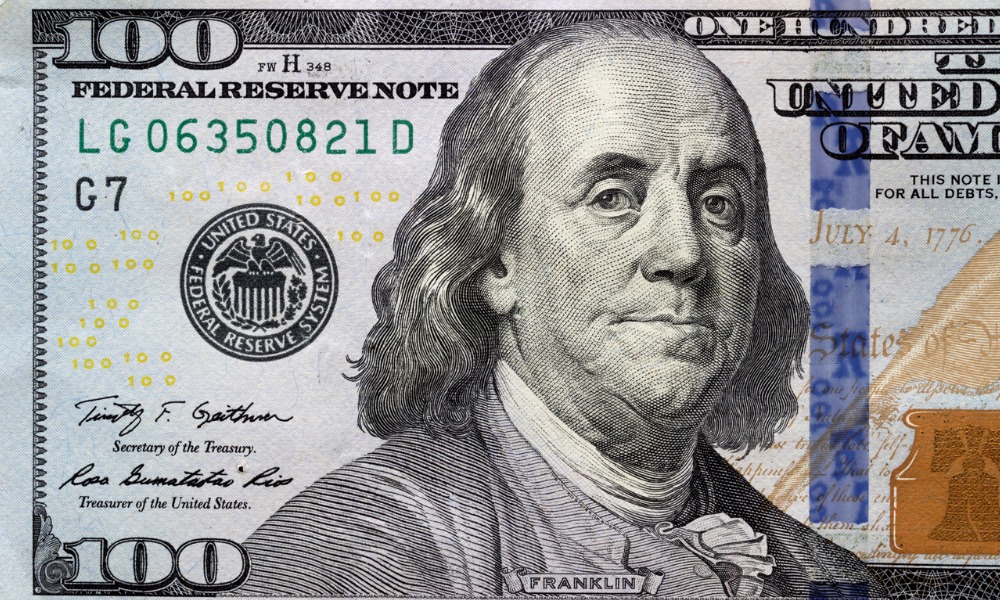Advisor and analyst weigh in on cause of the dip, point to strategies that can win for clients as U.S. dollar weakens

The recent dip in the U.S. dollar has economists, analysts, and advisors debating its cause and the opportunities it presents.
The U.S. dollar has fallen significantly against almost all its major counterpart currencies. On Monday it hit a two-year low against a strengthening yen, euro, and Canadian dollar. WP spoke with an analyst and an advisor about the underlying cause of the currency dip and whether it’s driven by secular or cyclical forces. They weighed in, too, on what this means for US equities and other USD denominated assets, as well as the opportunities this could present investors if they act fast.
“A lot of people are asking why this is happening and the best answer I can give is the dollar smile theory,” says Sean Coakley, market strategist at Cambridge Global Payments. “The theory goes that the U.S. dollar finds its favour in a cyclical fashion. When we see sell-offs in risk assets like the S&P 500 we see a jump in the U.S. dollar relative to CAD. But the US dollar tends to underperform at the very point in an economic cycle where the economy is set to recover.”
Coakley sees the dip as a natural progression in the ‘dollar smile’ cycle from US dollar strength at the peak of March’s sell-off in equities. That’s because, he says, that at the peak of risk aversion capital flows into USD denominated assets like cash and U.S. treasures as a safe haven. As outlooks improve for the global economy, investor cash flows out of those assets towards higher-yielding emerging markets or economies that might perform better in the short run. He says that as the recovery in the U.S. really takes hold, the dollar smile theory dictates that the value of the USD will rise again.
Whether or not it will, Coakley says the fall in the US dollar reflects a broad market sentiment that the worst of the pandemic and its economic impacts is already behind us and the global economy is beginning to recover.
Rob Tétrault disagrees. The senior VP and portfolio manager at the Tétrault Wealth Advisory Group at Canaccord Genuity says that the unique circumstances of the pandemic and U.S. failures in managing its spread are driving a shift away from the US dollar.
“We think it's an event-based reaction to the pandemic, the management of the pandemic, and the likelihood that a lot of people will continue to be unemployed,” Tétrault says. “It’s likely that they're going to have to print money at a record pace, support the economy and use some quantitative easing. All of that is definitely playing into what we what we think is a short-term negative push on the USD.”
Tétrault says this could result in a small short-term equity market correction, largely driven by commodity stocks put at risk by an oversold USD. He says, though, that investors and advisors shouldn’t be too worried about a short-term dip and should instead, take the opportunity to gain some U.S. equity and U.S. dollar exposure.
Canadian investors remain heavily overweight Canadian equities and Tétrault says this dip could be a chance to use the CAD’s relative strength to open a U.S. RRSP or TFSA or a U.S. denominated non-registered account, converting some Canadian equities to U.S. cash, ready to deploy if there is a small correction in the U.S. equity markets. He says that certain advisors can prove value with this move, too, for snowbird clients and clients that frequently travel, both to the U.S. and abroad and need to hold U.S. dollars. Making those conversions now, when dollars are cheap, will save your client.
While the euro’s recent strength is backed by recent agreement on a stimulus plan covering the whole Eurozone both Tétrault and Coakley say it’s unlikely to supplant the USD as the global reserve currency. They say, though, that where two months ago you could be laughed out of the room for suggesting the rise of the euro, it is now not impossible to comprehend.
Both Coakley and Tétrault also agree that adding U.S. equity exposure is a strong move for your clients. Coakley suggests taking on U.S. Equity ETFs with a Canadian dollar hedge. He says this will offer investors the U.S. and global exposure they need without exposing them to currency risk as the “dollar smile” continues.
Tétrault says those ETFs can be effective vehicles for clients that won’t ever need U.S. dollars, but if you want to offer clients a holistic plan, it’s worthwhile to grab the opportunity now and deliver them the U.S. cash they’ll need in future.
“We have U.S. accounts and Canadian accounts for many of our larger clients. They're not only going to get exposure, but they're going to get the currency trade too,” Tétrault says. “We’ve done that for clients in the past. When the [Canadian] dollar rallies to $0.76 USD we convert and when it goes back down to $0.68 USD we convert back. You're getting that exposure and, in the meantime, you're making a little bit on the currency trade. I think it’s a huge value add for the client, and the key to this strategy is to know the client situation.”



